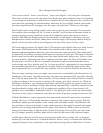Just a few notes for plug-in users.
One question that gets asked a lot is “Why no ‘Link’ switch “or “Why not a stereo EQ with one set
of controls?” The most accurate answer is “you guys are spoiled, ha ha”. To do it in digital is almost
a no-brainer and is just a matter of passing a few numbers to the other sides parameter registers. To
do it on an analog compressor is a bit more involved but still pretty easy and not pricey. But to do it
on an analog EQ, requires big expensive multi-deck switches, pots, and practically all audio
switching be done with relays or FETs. Now given that the rotary switches and all the pots are
already custom and difficult to source, getting ones that are twice as deep, 4 times rarer, and would
only be used occasionally, would add a lot of cost to the unit. Besides that, considering that the Mini
is really stuffed with parts, just routing printed circuit board traces, would be difficult and involve
compromises to the integrity. Which brings up the final point, crosstalk would probably bite one’s
butt for even trying. Basically, a stereo link or single set of knobs is way more difficult to do in
analog, and extremely easy in digital and that is the difference.
Next question…”Why no Manley EQ plug-in?” Maybe we are a bit too picky, but we haven’t heard
a plug in that really approximates the subtleties of an inductor based EQ or even a transformer.
Maybe some day, we’ll combine our knowledge with some DSP wizard’s knowledge and do
something cool, and cheap (which is really what you are asking for, right?). We might also say, that
we would prefer to do something new and different than try to clone our existing stuff. If and when
Manley does a plug-in it should be at least as radical and special as the hardware. In other words,
take advantage of digital technology and do what it can do best, rather than the questionable effort of
trying to recreate (again) analog processes especially if this is where digital technology is at its
weakest or most immature for now. However, like yourselves, we do use plug-ins, music programs,
etc, and evaluate too many to name, and we are keeping our ears and eyes open. Of course, some of
you know that the we have contributed to some non-Manley plug-ins that are highly regarded.
Meanwhile progress continues and we are continuing to listen, and maybe some day we'll hook up
with some adventurous DSP hot shots with more on their minds than "clone market $".
Or this question…” Have you guys thought about digital controlled analog so that maybe we can
control the EQ like a plug-in and automate or even recall settings?” Gee, we would love to but…..
we, as an industry, just don’t have the technology yet that would enable that without compromising
the signal integrity (and do it at a reasonable cost). For us, that has to be a prime consideration, and
it is really why most of our customers come to Manley. We’ve been approached by a few companies
asking to put our front panels on a computer screen for recalls, but none have suggested any reason
why that would be better or more accurate or cheaper than a pencil and paper, especially when we
supply a paper template in the back of the manual. So, our decisions are based on why people buy
our stuff, which is usually the quality and sound rather than feature set and buzz words.
Or the big question…”Why do analog EQs sound better or at least different than my 50 plug-ins?”
Maybe DSP guys trying to model analog, have zero experience with analog. Maybe young guys who
haven’t yet developed their ears are developing audio software. Maybe FIR filters used everywhere
in digital audio might be a little more audible than people presume. Maybe human hearing and both
analog and digital processing are deeper topics than most people believe and all of us are still
learning. The good news is that the difference is narrowing every year and maybe some day the
choice will be mostly whether this signal path is analog or digital or the order that you prefer to
process or whether you prefer LCD screens or physical knobs and switches.


















